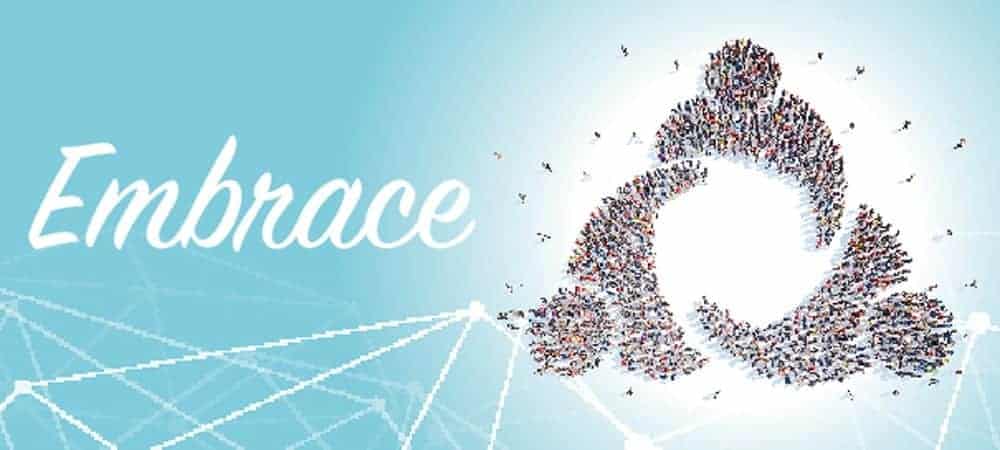Status and Outlook


For this project, SAP is working with three hyperscalers—Microsoft, AWS, and Google—as well as global system integrators. Microsoft has been awarded the ‘preferred partner’ status within the Embrace project in October 2019. It is rare that SAP prefers one partner over the others so openly. This approach has led to some irritation among customers, and even German-speaking SAP user group DSAG e.V. had some unanswered questions on this matter.
For Microsoft, this status is invaluable: Hyperscale cloud providers are dependent on customers’ trust. Furthermore, the product IaaS in its most basic iteration is interchangeable. Such a public preference from SAP is akin to a knightly accolade in the industry. Once finalized, infrastructure decisions are long-term commitments, and changing them later on can prove nearly impossible—meaning that customers who decided to opt for Microsoft Azure because of its preferred partner status will remain with the hyperscaler for quite some time.
SAP itself benefits from Embrace in two different ways. On the one hand, because customers only rarely involve SAP in the discussion around infrastructure, getting a foot in the door early is crucial for access to customers. On the other hand, its core product S/4 is still dependent on traditional infrastructure (IaaS). S/4 is not a native serverless cloud application which can be operated in AWS’ Lambda and scaled in accordance with workloads—e.g. scaling down again after handling a volatile peak.
Consequently, SAP needs active support from its partners to optimize the operational management of its core product to relieve its customers of additional efforts and enhance its internal IT for customer systems in the Hana Enterprise Cloud (HEC). Thanks to the wide-spread use of Office 365 Enterprise, enterprise customers are already familiar with Microsoft’s services, lowering the threshold for a ‘cloudification’ of SAP applications with Microsoft.
What results did Embrace and the status of preferred partner achieve? Microsoft’s market reach concerning enterprise customers has been improved, and SAP has a reliable partner with a strong, clear commitment. SAP’s roadmap is beset with numerous already delivered or planned innovations with Microsoft—more projects than with any of its other partners. The collaboration between the sales teams of SAP, Microsoft, and system integration partners has – at least sporadically—meant a huge step forward when it comes to working and cooperating with customers. Their efforts have unfortunately been hampered by an unprecedented global pandemic.
Embrace 2.0
It has become clear in recent months that an update to the Embrace project, titled Embrace 2.0, is coming. It is rumored that Microsoft will lose its status as preferred partner since SAP wants to return to a more neutral assessment of its partners. While this may look like a setback for Microsoft at first, it has to be taken into account that the preferred partner status has already fulfilled its (marketing) purpose. Furthermore, the partnership between SAP and Microsoft will be deepened regardless of its status. There are still some areas where both partners need to further improve their services.
Another indication of their intensified cooperation is their announcement that SAP and Microsoft will work together in the area of supply chain and Industry 4.0 on Microsoft Azure. SAP solutions from the digital supply chain portfolio will be offered as SaaS on Microsoft Azure. SAP functionalities are supposed to be operated on Azure Stack Edge, meaning that SAP solutions can be leveraged in factories. Azure Stack Edge is specifically developed Hardware as a Service (HaaS) with Azure Stack Edge, designed for reliable production.
This initiative is more than just production-related edge services, however. The two partners will develop a framework for resilient operation of the entire supply chain to accommodate the rapidly increasing uncertainties in the world stemming from natural disasters, tariff wars, or political decisions. A production-related intelligence can ensure reliable procurement, enhanced production, and optimized logistics of the product all the way to the customer. The smaller the batch size, the more complex this approach becomes, necessitating seamless integration. With this initiative, Microsoft and SAP leverage their unique competencies, fully aware that there will be some overlap sometimes, as is the case with Microsoft Azure IoT and SAP Internet of Things.





